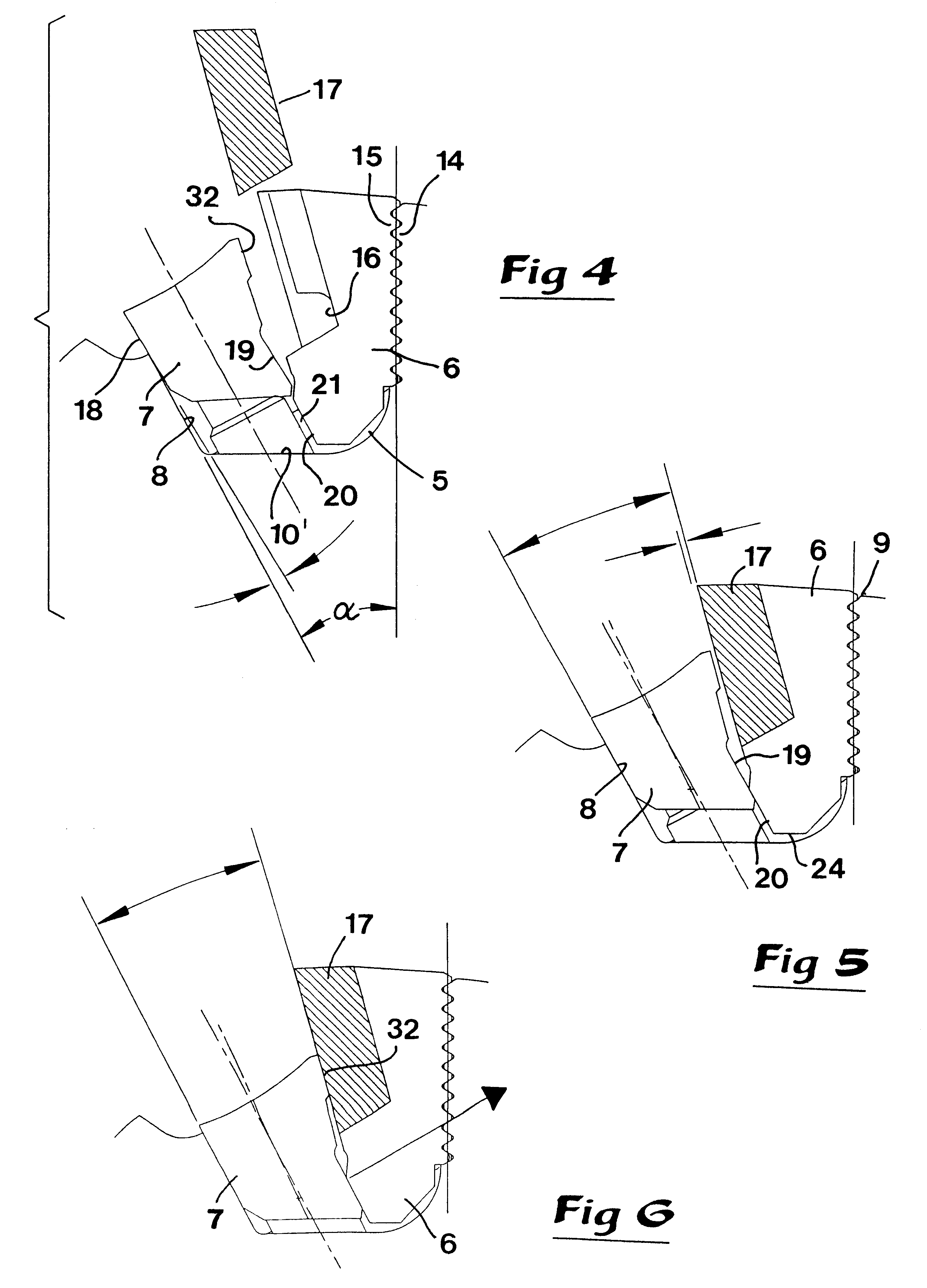Milling tool with precisely positionable inserts
a technology of inserts and milling tools, which is applied in the field of milling tools, can solve the problems of manual adjustment of the cassette during the assembly of the tool, the inability to achieve a predetermined, precisely defined initial position of the cassette, and the inconvenience of the design of the known tool
- Summary
- Abstract
- Description
- Claims
- Application Information
AI Technical Summary
Benefits of technology
Problems solved by technology
Method used
Image
Examples
Embodiment Construction
In FIG. 1, there is shown a body 1 in the form of a cutter head which is rotatable around a central geometric longitudinal axis (not shown). In the example, the body 1 is delimited by a peripheral, envelope-like surface 2, which extends between opposite axially spaced end surfaces 3, 4. The first-mentioned side 3 consists of a front side in the vicinity of which a tool cutting insert 17 is located, while the last-mentioned side 4 consists of a rear side to which a rotatable spindle or the like (not shown) is connected in a suitable way.
Recesses 5, which open radially outwards, extend longitudinally through the envelope surface 2, the purpose of these recesses being to accommodate machining elements, preferably in the form of cassettes 6 which carry replaceable cutting inserts, as well as at least one clamping wedge 7. Each separate recess 5 (see also FIGS. 4-6) is delimited by a radially extending front wall 8, a radially extending rear wall 9 and a bottom wall 10 interconnecting ra...
PUM
 Login to View More
Login to View More Abstract
Description
Claims
Application Information
 Login to View More
Login to View More - R&D
- Intellectual Property
- Life Sciences
- Materials
- Tech Scout
- Unparalleled Data Quality
- Higher Quality Content
- 60% Fewer Hallucinations
Browse by: Latest US Patents, China's latest patents, Technical Efficacy Thesaurus, Application Domain, Technology Topic, Popular Technical Reports.
© 2025 PatSnap. All rights reserved.Legal|Privacy policy|Modern Slavery Act Transparency Statement|Sitemap|About US| Contact US: help@patsnap.com



